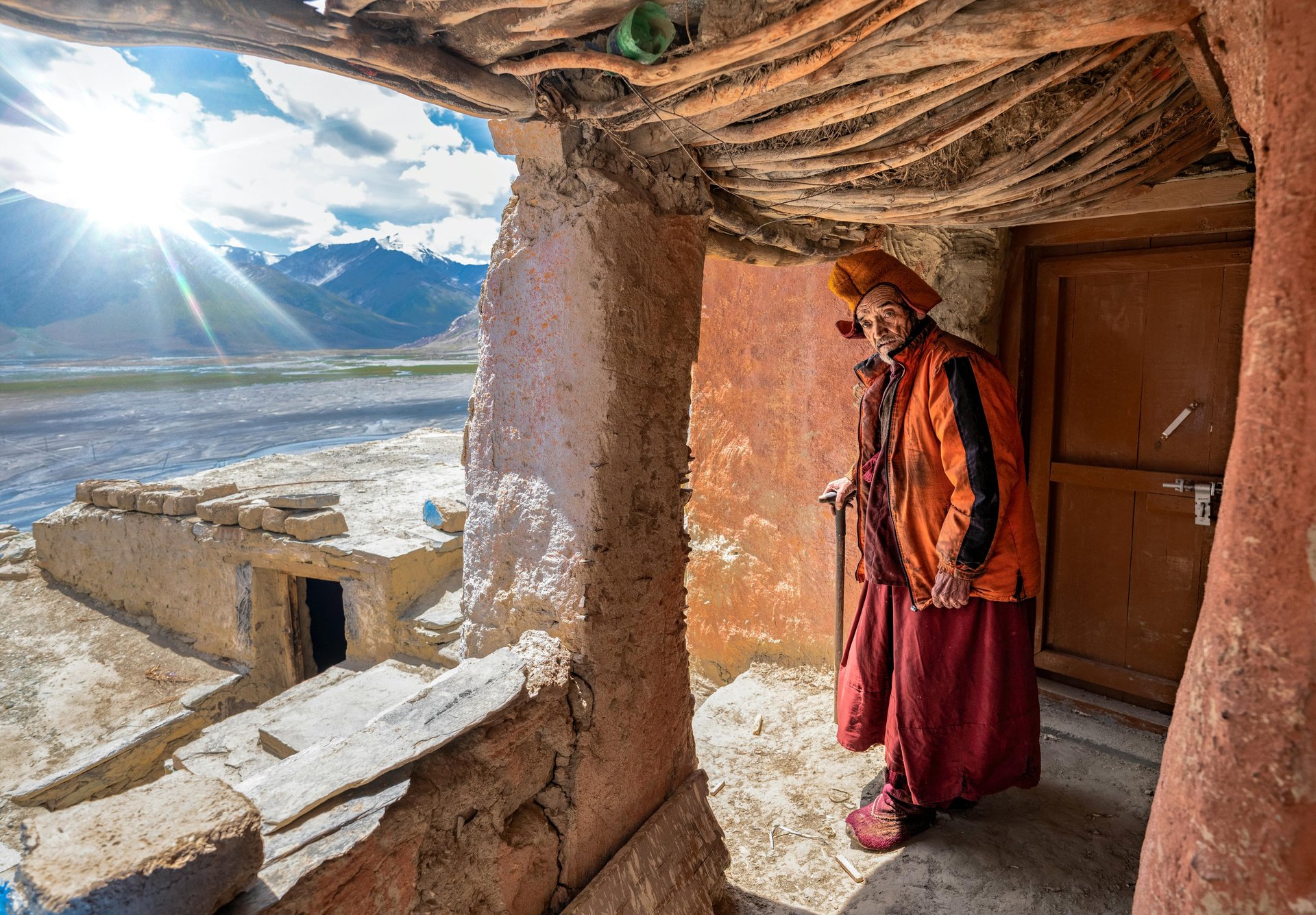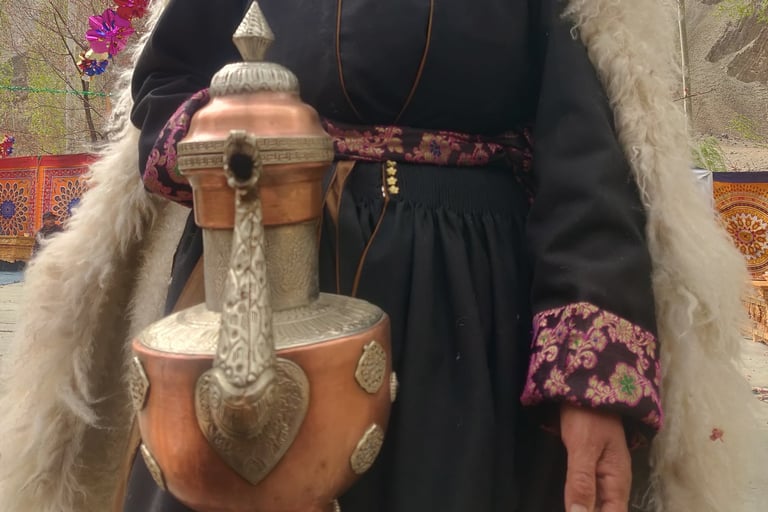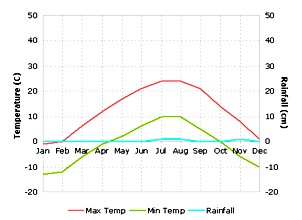
Ladakh Travel Information Guide
Jullay
Most of Ladakh is at an altitude of more than 3000m so you need to get acclimatized before you can set out to travel. Your body needs to adapt to high altitude, as the higher you go, the air becomes rarified and the oxygen available for you to breathe becomes lesser. Even though your body can adapt to 'thin air', you need to give it time to do so. This is what is called acclimatization.
Acclimatization is essential to avoid acute mountain sickness (AMS). The symptoms include headache, lethargy, dizziness, and loss of appetite. You must allow a full day of complete bed rest for acclimatizing to the high altitude and low level of oxygen. High altitude sickness or Acute Mountain Sickness (AMS) is a serious condition that can happen to anyone at altitudes above 3000 meters or 10000 feet.


Gradual Ascent
Arriving by Air (Leh – 3,500 m)
• After flying directly into Leh, allow at least 48 hours of complete acclimatization before travelling to higher-altitude areas such as Khardung La, Chang La, Pangong Tso, or Tso Moriri.
• Use these two days for gentle walks, hydration, and rest.
Arriving by Road
• Travelling via Jammu → Srinagar → Kargil → Leh helps you gain altitude gradually, giving your body a natural head start in acclimatizing.
• Travelling via Manali → Sarchu → Leh helps you gain altitude gradually, giving your body a natural head start in acclimatizing.
Hydration, Rest & Gentle Exploration
• Drink 3–4 litres of fluids daily (water, ORS, soups, herbal teas). You may not feel thirsty, but hydration is your biggest ally at altitude.
• Prioritize rest and sleep—"Sleep is medicine" at high altitude.
• Choose light acclimatization walks: Shanti Stupa, Leh Palace, or a short stroll around the market.
Diet for High Altitude
At high elevations, the digestive system slows down. To maintain energy and warmth:
• Eat high-carbohydrate, low-fat, warm meals.
• Ideal options: soups, porridge, pasta, rice bowls, thukpa, steamed vegetables.
• Avoid oily or heavy foods that burden digestion.
• Eat small, frequent meals rather than heavy portions.
Dress Smart & Protect Yourself
• Always dress in layers, as temperatures swing dramatically from day to night.
• Use broad-spectrum sunscreen, SPF 50+, lip balm, sunglasses, hat/cap, and a scarf.
• Nights at Pangong, Nubra, and Tso Moriri are colder due to elevation—carry an extra warm layer.
Watch Your Body Carefully
Be mindful of Acute Mountain Sickness (AMS) symptoms:
• Headache, nausea, dizziness
• Loss of appetite
• Fatigue or difficulty sleeping
• Breathlessness during minimal activity
If symptoms worsen:
• Immediately descend to a lower altitude and seek medical help.
• Diamox (Acetazolamide) may be used only after consulting a doctor.
• Do not rely solely on medication—proper acclimatization is irreplaceable.
Pro Tips from Experts
• Avoid alcohol, smoking, caffeine, and sedatives, especially for the first 48 hours.
• Follow the principle “climb high, sleep low”—go to high points during the day but stay overnight at a lower altitude.
• Move slowly; even short climbs can feel strenuous in thin air.
Travelling to Ladakh is a remarkable experience, but the region’s high altitude, thin air, and harsh climate demand thoughtful preparation. The following guide covers everything you need—acclimatization, health, clothing, travel tips, cultural etiquette, and sustainable practices—to ensure a safe and fulfilling journey.
Traveller Eligibility
Travellers with heart disease, high BP, obesity, cervical/spine issues, or pregnant women are strongly advised not to travel to Ladakh.
Travellers undertake the journey entirely at their own risk.
Consult a doctor if you have any existing medical condition before planning the trip.
Health & Acclimatization Guidelines
• Give your body 1–2 days of strict rest upon arrival in Leh.
• Walk slowly—your stamina at home will not match your stamina at altitude.
• Keep yourself warm; avoid bathing on Day 1.
• Do not spend more than 10 minutes at Khardung La, Chang La, or other high passes.
• Carry warm clothes every time you step out—weather turns quickly.
• Avoid alcohol and smoking for the first two days.
• Consult a doctor before taking Diamox.


Important Information
Mobile Network
Please note that in Ladakh only Post-Paid SIM network will work of BSNL, JIO, AIRTEL. Pre-Paid SIM will not work here
ESSENTIALS
Sunglasses, sunscreen (SPF 50+), lip balm, moisturizer, and a power bank
A first-aid kit with basic medicines and altitude sickness tablets
DO NOT forget your sunscreen
If you, like me, burn easily, then don’t forget to take a bevy of sunscreens for the face and body. Ladakh’s sun is searing even when the weather is chilly. The altitudes are bound to leave your lips and skin feeling dry and parched.
Respect Local Culture & Traditions
Ladakh has a rich Buddhist culture. When visiting monasteries or interacting with locals:
Dress modestly and cover your shoulders inside religious places.
Do not use camera flash in the monasteries
Seek permission before clicking pictures.
Follow the rules while visiting monasteries in Ladakh.
Follow Sustainable Travel Practices
Carry a reusable water bottle to reduce plastic waste.
Avoid littering and dispose of waste responsibly.
Support local businesses by purchasing handicrafts and dining at local restaurants.
Avoid using single-use plastic items.
Don’t Feed Wildlife or Stray Animals
Ladakh is home to fragile wildlife, including snow leopards, Himalayan foxes, and marmots. Feeding animals can disrupt their natural diet and behaviour.


